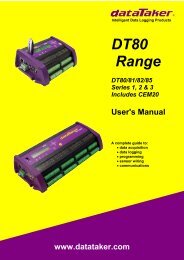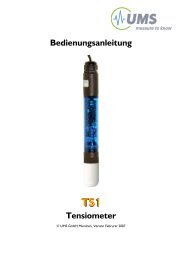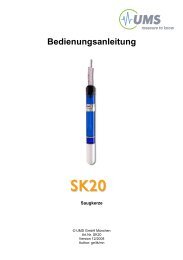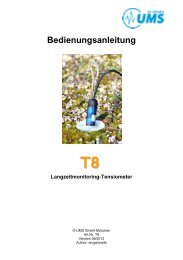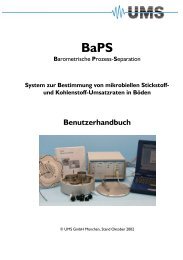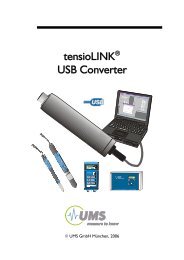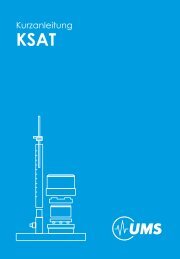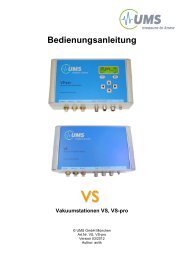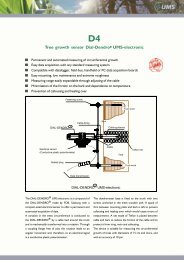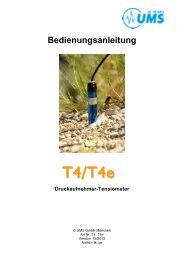T8 Manual - UMS
T8 Manual - UMS
T8 Manual - UMS
You also want an ePaper? Increase the reach of your titles
YUMPU automatically turns print PDFs into web optimized ePapers that Google loves.
Description of the <strong>T8</strong><br />
2.2 Output signals<br />
2.2.1 Analog<br />
The <strong>T8</strong> version 2005 has an internal microprocessor and offers water<br />
tension and temperature as analog output signals plus the refilling<br />
status as a digital signal.<br />
Water tension and temperature are available as linear voltage<br />
signals in a selectable range of 0...1 V, 0...2 V (default setting) or<br />
0...5 V. Thus, the <strong>T8</strong> are compatible to almost any data logger or<br />
data acquisition system.<br />
Furthermore, the measuring range itself can be set for special<br />
measuring tasks. Standard is +100 kPa to -100 kPa and -30 to<br />
+70°C.<br />
The standard setting for the filling status is either switch “open” (0 V)<br />
or “closed” (voltage signal equal to power supply voltage).<br />
2.2.2 Digital<br />
To change the settings of signal range or use the serial interface of<br />
the <strong>T8</strong> the tensioLINK ® USB converter with Windows software<br />
tensioVIEW ® is available as an accessory.<br />
Filling status as a Digital Status<br />
If the indicator detects an air bubble the indicator switch closes and<br />
the supply voltage is available on the output. If for example a LED<br />
with a series resistor is connected, the LED will light up to indicate<br />
the necessity of refilling. In addition, or instead, connect the signal to<br />
a digital or analogue logger channel to record the filling status for<br />
quality control of the matrix potential readings.<br />
2.3 Serial interfaces<br />
The <strong>T8</strong> has two serial interfaces: the RS485 compatible tensioLINK<br />
interface and SDI12.<br />
13/56




